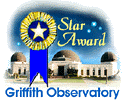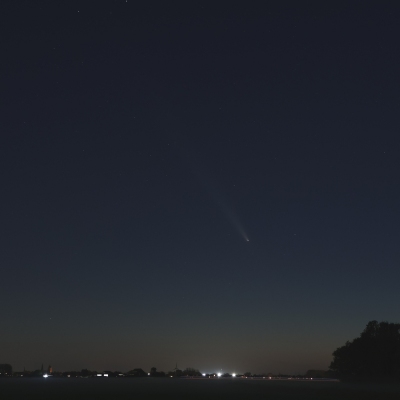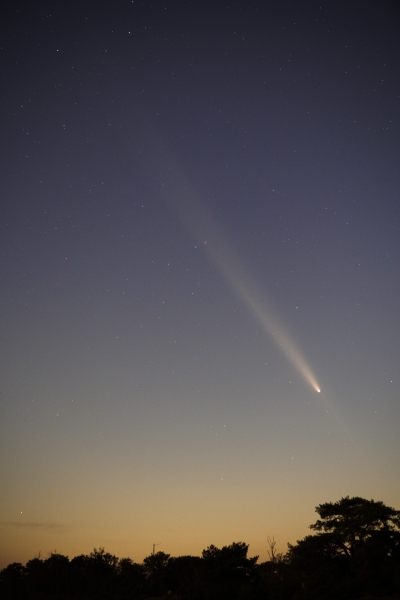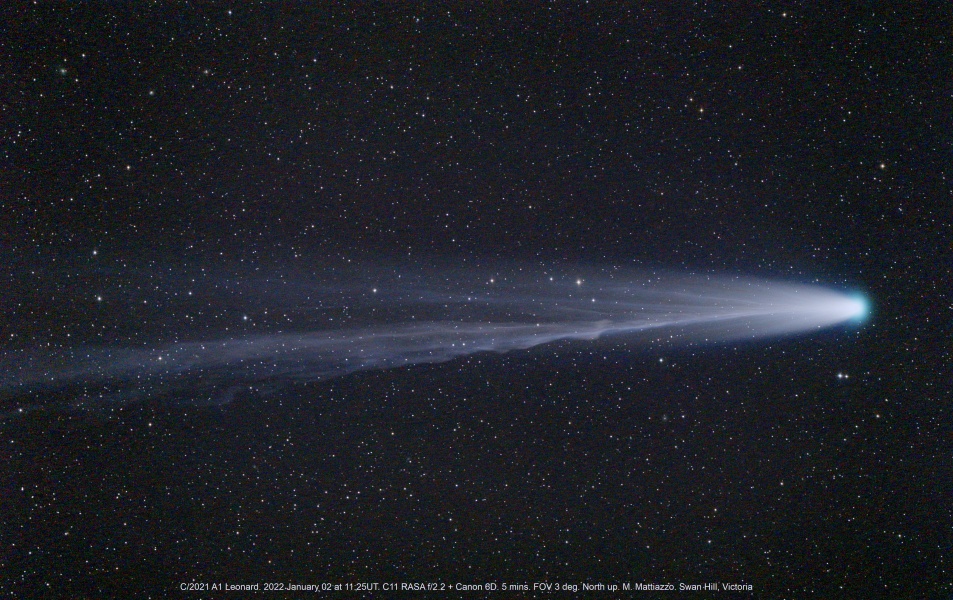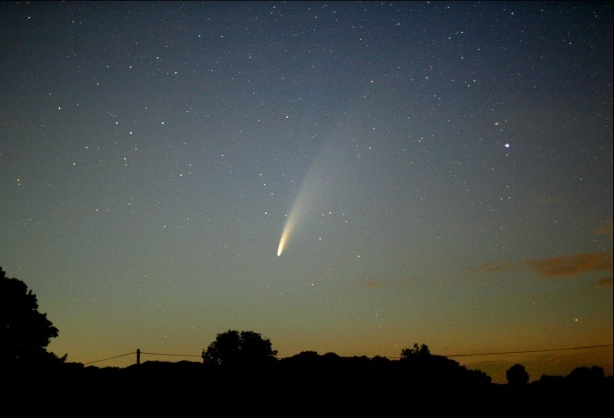|
This comet, after being briefly visible in de morning sky for southern observers as a 2nd magnitude comet with a long dust tail, has now become an evening object
best placed for northern hemisphere observers, with visibility improving every day now that the elongation is increasing again.
The comet briefly peaked at magnitude -4 on October 9 due to forward scattering, but at an elongation of a mere 4 degrees from the Sun was virtually
invisible for earthbound observers.
However, the situation improved rapidly over the following days although the situation was still far from ideal with the comet in twilight very low over
the western horizon, and a bright near full Moon to boot.
But over the coming days the situation will improve further. After October 20 the comet can be observed in a dark sky near the end of evening twilight
without lunar interference. Although the comet now is moving away from both the Earth and the Sun and gradually fading it is expected that it will still
show a long dust tail, which under the best conditions may still be some 20 to 30 degrees long. By the time the Moon is starting to interfere again
during the second week of November the show will be virtually over.
Nevertheless observers with proper equipment will be able to follow this comet until the end of the year. By that time it probably will have faded to
magnitude 10 or so and gradually disappear in evening twilight.
On October 14 the Earth was predicted to pass the orbital plane of the comet, and the geometry was perfect for observation of an anti-tail.
Fortunately that day brought clear skies for us, albeit with considerable lunar interference.
The image at upper right was taken close to my observing site near Westerwijtwerd by Iris Veronique Mulder with a Canon EOS R10.
It is a 8s exposure at ISO400 with a 40mm f/5 lens taken at 18:07UT and is a good representation of the naked eye view.
A larger version of this image can be viewed by clicking here.
The close-up image at lower right was taken at the Aekingerzand near Wateren by Rik ter Horst at 18:05UT.
It is a 3s exposure at ISO1600 using a Sony A7III camera equiped with a Canon 100mm f/2 lens, and is a good representation of the view in (larger)
binoculars. Note the very faint anti-tail pointing at lower right opposite the main dust tail.
A larger version of this image can be viewed by clicking here.
[RJB17102024]
Currently, mid November, C/2023 A3 has faded to 8th magnitude, but might still be visible a bit longer in larger binoculars.
The rapid fading in the second half of October is nicely illustrated by the images that Edwin obtained from Burlage.
A representative selection can be viewed by clicking here.
[Updated RJB17112024]
|  Reinder J. Bouma
Reinder J. Bouma
 Edwin van Dijk
Edwin van Dijk
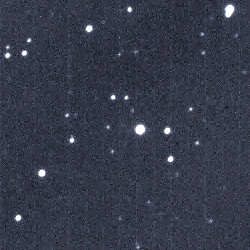 Minor planet 9706 on August 17, 2002 in NEAT images.
Minor planet 9706 on August 17, 2002 in NEAT images.